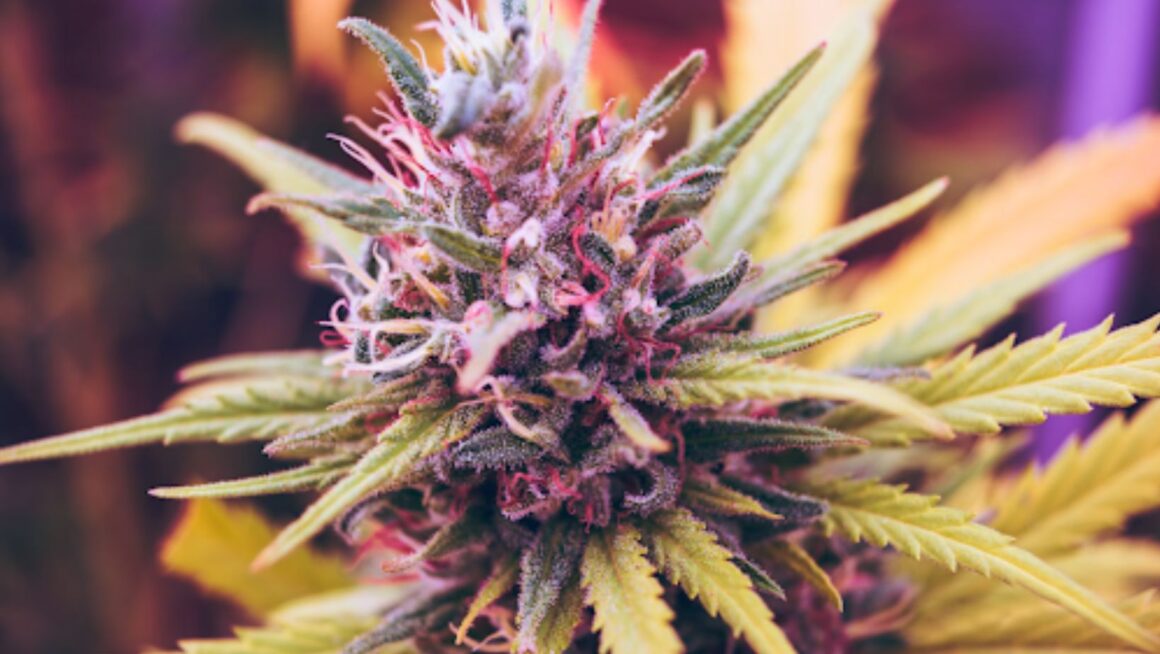In the ever-evolving landscape of cannabis research, two compounds consistently capture attention: THC and CBD. Though they stem from the same plant, their effects and applications diverge significantly. THC, or tetrahydrocannabinol, is renowned for its psychoactive properties, producing the “high” often associated with cannabis use. In contrast, CBD, or cannabidiol, is celebrated for its non-psychoactive nature and potential therapeutic benefits.
Understanding these differences is crucial for consumers and medical professionals navigating the cannabis world. The distinct molecular structures of THC and CBD lead to varying interactions within the body. THC binds directly to CB1 receptors in the brain, influencing mood and perception, while CBD interacts more subtly with the endocannabinoid system. This guide aims to demystify these cannabinoids, exploring their unique characteristics and how they can be used responsibly for both medical and recreational purposes.
Understanding THC and CBD
THC and CBD, both cannabinoids found in cannabis, have distinct effects due to their structural differences. They interact uniquely with the body’s endocannabinoid system, offering varied therapeutic benefits.
What is THC?
THC, or tetrahydrocannabinol, is the main psychoactive compound in cannabis responsible for the “high” sensation. Its molecular structure allows it to bind directly to CB1 receptors in the brain, part of the central nervous system. This interaction results in altered perception, mood, and cognitive function. Beyond its recreational use, THC offers medical benefits like pain management, appetite stimulation, and nausea reduction. It’s available in various forms, including THC Vape, which provide a rapid onset of effects through inhalation.
What is CBD?
CBD, or cannabidiol, is a non-psychoactive cannabinoid prevalent in hemp. Unlike THC, CBD doesn’t bind directly to CB1 receptors. Instead, it influences the endocannabinoid system indirectly, promoting a sense of balance without altering perception. Research highlights CBD’s potential to reduce THC’s psychoactive effects, making it a popular choice for those seeking therapeutic benefits without intoxication. Common uses include managing anxiety, inflammation, and seizures. CBD products vary from oils to edibles, catering to different preferences and needs.
Chemical Differences Between THC and CBD
THC and CBD, both cannabinoids, exhibit distinct chemical structures, leading to different interactions in the body.
Molecular Structure
THC and CBD share a molecular formula, C21H30O2, yet differ in the arrangement of atoms, affecting their chemical properties. THC features a closed ring structure, resulting in psychoactive effects. In contrast, CBD possesses an open ring, contributing to its non-psychoactive nature. This structural difference is key to their diverse interactions and effects.
Interaction with the Endocannabinoid System
Within the endocannabinoid system, THC primarily binds to CB1 receptors, located in the brain and central nervous system. This binding results in the psychoactive “high” experienced with cannabis use.

On the other hand, CBD interacts with both CB1 and CB2 receptors, located in the peripheral nervous system and immune cells, without causing intoxication. CBD’s ability to inhibit the breakdown of endocannabinoids enhances their effects, contributing to its therapeutic benefits.
Effects of THC vs. CBD
THC and CBD have distinct effects due to their interactions with the body’s endocannabinoid system. Understanding these differences can guide their use for both recreational and medicinal purposes.
Psychoactive vs. Non-Psychoactive Effects
THC is the psychoactive compound in cannabis that produces a “high.” It achieves this by binding to CB1 receptors in the brain, leading to altered perception, mood, and cognition. Conversely, CBD is non-psychoactive; it doesn’t cause intoxicating effects. Instead, it modulates the body’s response to various stimuli, potentially counteracting THC’s psychoactivity. This makes CBD an attractive option for those seeking therapeutic benefits without the high.
Impact on the Brain and Body
THC impacts the brain primarily through CB1 receptor activation, resulting in psychoactive effects such as euphoria and altered sensory perception. This is why THC vapes and other forms are popular for those seeking immediate mental effects. On the other hand, CBD interacts indirectly with CB1 and CB2 receptors, influencing pain, anxiety, and inflammation responses. Its non-psychoactive nature allows users to experience benefits like reduced anxiety and improved mood without impacting cognitive functions significantly.
Health Benefits and Uses
THC and CBD offer distinct health benefits, with their therapeutic applications diverging due to their unique interactions within the body’s endocannabinoid system.
Therapeutic Applications of THC
THC provides several therapeutic benefits. It aids in pain management, effectively alleviating chronic pain related to conditions like fibromyalgia, arthritis, and multiple sclerosis. THC’s appetite-stimulating properties help individuals experiencing significant weight loss due to conditions such as HIV/AIDS or cancer. As an antiemetic, THC reduces nausea and vomiting, notably benefiting patients undergoing chemotherapy. Muscle spasticity and cramps, often seen in multiple sclerosis, show improvement with THC use. Sleep disorders benefit from THC as it decreases the time to fall asleep and extends overall sleep duration. These applications make THC a versatile option in medical cannabis treatments.
Therapeutic Applications of CBD
CBD offers diverse therapeutic uses, primarily due to its non-psychoactive nature. It provides pain relief for chronic pain and inflammation, though more research is needed to understand its full efficacy. Anxiety and depression management show promise with CBD, as it may reduce symptoms of social anxiety disorders and PTSD. Its use in seizures is notable, with FDA approval for treating certain epilepsy types. CBD’s neuroprotective potential suggests benefits for neurodegenerative conditions such as Alzheimer’s and Parkinson’s diseases, even though human trials remain necessary to confirm these effects. CBD’s ability to promote bodily balance without intoxication broadens its appeal for various medical purposes.
Potential Side Effects and Risks
Understanding the side effects and risks of THC and CBD provides insight into their safe use. Both compounds can impact users differently based on their unique properties.
THC-Related Side Effects
THC can produce psychoactive effects, and these may vary based on consumption methods like THC vape. Potential side effects include dry mouth, red eyes, memory loss, and increased heart rate. It can also cause slower response times and issues with coordination, impacting daily functionality.

Users may experience a general feeling of being high due to THC’s interaction with CB1 receptors in the brain. In some cases, long-term use could lead to dependency or exacerbate mental health conditions such as anxiety.
CBD-Related Side Effects
CBD is generally considered safe, but it can lead to adverse effects in certain situations. Potential side effects include decreases in alertness, mood changes, decreased appetite, and gastrointestinal symptoms like diarrhea. Notably, some drug interactions and liver function abnormalities may result from CBD itself rather than contaminants. CBD’s interaction with other medications could amplify these side effects, making it crucial for users to consider their existing health conditions and medications when using CBD products.
Legal Considerations
Cannabis legality varies widely, with federal and state laws differing significantly in the US. THC, the psychoactive component, is classified as a Schedule I substance at the federal level, making it illegal in many contexts. However, several states have legalized THC for recreational and medical use, leading to a patchwork of regulations.
CBD, derived primarily from hemp, enjoys broader legal acceptance after the 2018 Farm Bill removed it from the Controlled Substances Act. This legalized its production and sale, provided CBD products contain less than 0.3% THC. Despite federal legality, individual states have imposed varying restrictions on CBD use.
Internationally, THC and CBD face different legal challenges, as countries adopt differing policies on cannabis compounds. While some nations have legalized the use of both substances for medicinal purposes, others maintain strict prohibitions.
When considering products like THC vape pens, consumers should be aware of local laws and regulations, as legality and restrictions can impact product availability and use. Understanding the legal landscape remains essential for both the pharmaceutical utilization and recreational consumption of THC and CBD products.
Conclusion
Understanding the distinctions between THC and CBD is crucial for anyone exploring cannabis for recreational or medicinal purposes. Each compound offers unique benefits and potential risks due to their different interactions with the body’s endocannabinoid system. THC’s psychoactive properties make it appealing for those seeking a mental high, while CBD’s non-intoxicating nature provides therapeutic benefits without altering cognitive functions. As legal landscapes continue to evolve, staying informed about local regulations is essential for safe and responsible use. By grasping these differences, consumers and medical professionals can make informed decisions tailored to individual needs and preferences.


